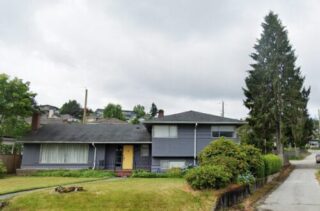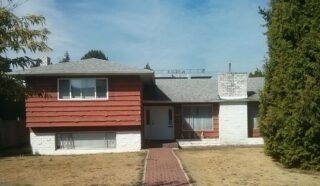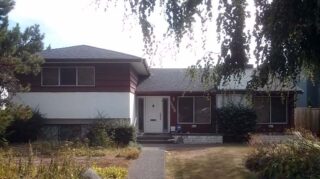Wide lap siding covers the basement level and up to the floor line on the main floor. Stucco is used on the main and upper floors. Roofs are usually asphalt, chimney and foundation work are brick or stone masonry. Sometimes brick masonry replaced the lap siding and matches the chimney.
Form
Split level houses have low-pitched side-gabled or hipped roofs. One side of the house has its floor a half-storey above the other side. The front door is normally near the middle, with internal stairs leading up to bedrooms and down to a rec room on one side of the house, with kitchen and living room areas occupying the other side. They only exist on wide lots and have many of the features of the Rancher style.
Background
Like the Rancher, the explosion of suburban developments after WWII made the Split-Level style possible. It became popular in the 1950s as a solution to the problem of increasing floor-space in the single-level Rancher without needing wider lots. The Split-Level was designed as a multi-storey variation of the Rancher, and in Canada popularized by CMHC plan brochures. It has a similar horizontal orientation. The style is especially common on lots that are not quite wide enough for a traditional rancher. Although sometimes featuring colonial-style decoration, the focus of these designs are functional. They are popular in Vancouver suburbs to this day.
Details
- Low-pitched side-gabled or hipped roof
- Two-storey unit with a one-storey wing
- Horizontal lines
- Overhanging eaves
- Door near centre
- One side is half-storey taller than the other side



